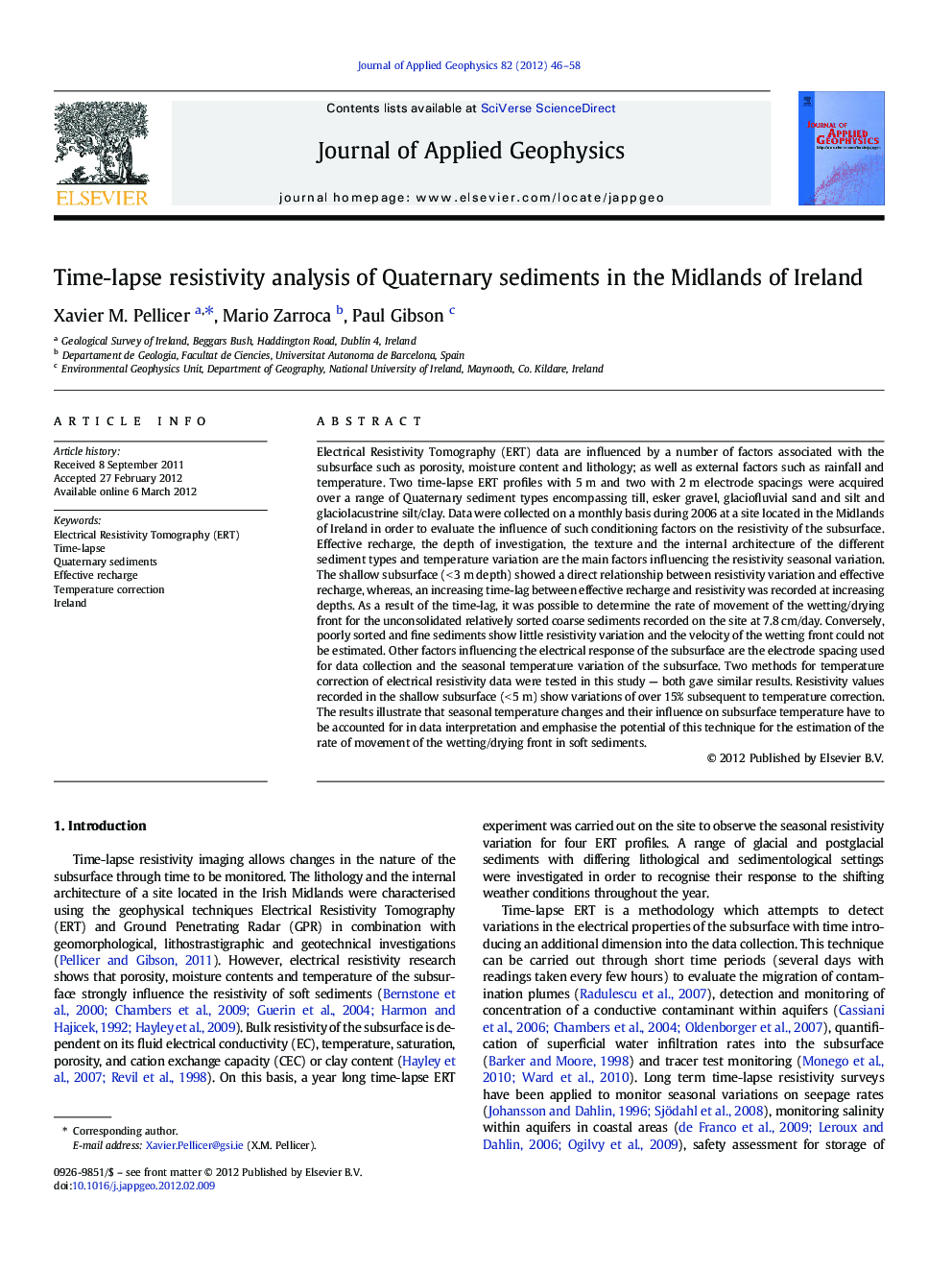| کد مقاله | کد نشریه | سال انتشار | مقاله انگلیسی | نسخه تمام متن |
|---|---|---|---|---|
| 4740543 | 1641169 | 2012 | 13 صفحه PDF | دانلود رایگان |

Electrical Resistivity Tomography (ERT) data are influenced by a number of factors associated with the subsurface such as porosity, moisture content and lithology; as well as external factors such as rainfall and temperature. Two time-lapse ERT profiles with 5 m and two with 2 m electrode spacings were acquired over a range of Quaternary sediment types encompassing till, esker gravel, glaciofluvial sand and silt and glaciolacustrine silt/clay. Data were collected on a monthly basis during 2006 at a site located in the Midlands of Ireland in order to evaluate the influence of such conditioning factors on the resistivity of the subsurface. Effective recharge, the depth of investigation, the texture and the internal architecture of the different sediment types and temperature variation are the main factors influencing the resistivity seasonal variation. The shallow subsurface (< 3 m depth) showed a direct relationship between resistivity variation and effective recharge, whereas, an increasing time-lag between effective recharge and resistivity was recorded at increasing depths. As a result of the time-lag, it was possible to determine the rate of movement of the wetting/drying front for the unconsolidated relatively sorted coarse sediments recorded on the site at 7.8 cm/day. Conversely, poorly sorted and fine sediments show little resistivity variation and the velocity of the wetting front could not be estimated. Other factors influencing the electrical response of the subsurface are the electrode spacing used for data collection and the seasonal temperature variation of the subsurface. Two methods for temperature correction of electrical resistivity data were tested in this study — both gave similar results. Resistivity values recorded in the shallow subsurface (< 5 m) show variations of over 15% subsequent to temperature correction. The results illustrate that seasonal temperature changes and their influence on subsurface temperature have to be accounted for in data interpretation and emphasise the potential of this technique for the estimation of the rate of movement of the wetting/drying front in soft sediments.
► Time-lapse resistivity analysis of unconsolidated sediments.
► Data were collected on a monthly basis during 13 months.
► There is a direct relationship between effective recharge and resistivity variation.
► Subsurface temperature strongly affects the resistivity of the medium.
Journal: Journal of Applied Geophysics - Volume 82, July 2012, Pages 46–58